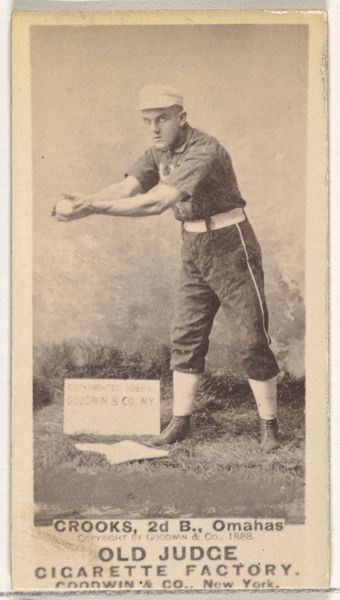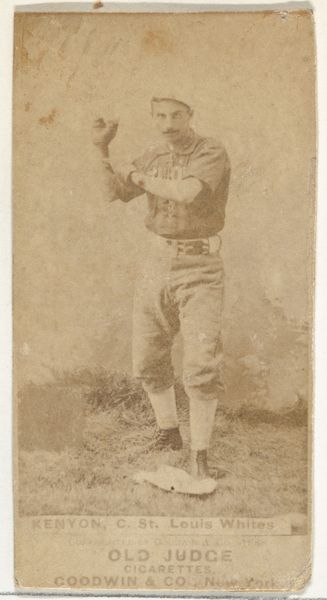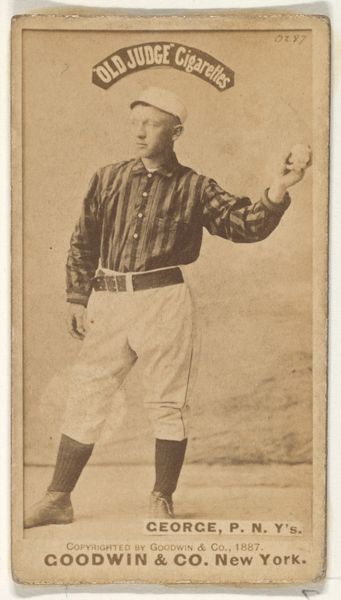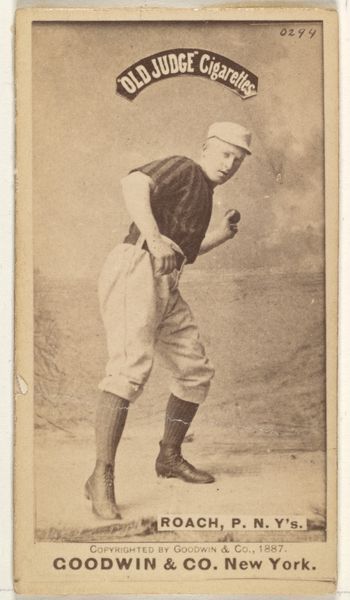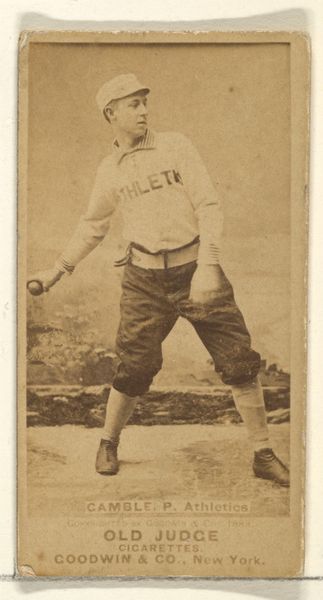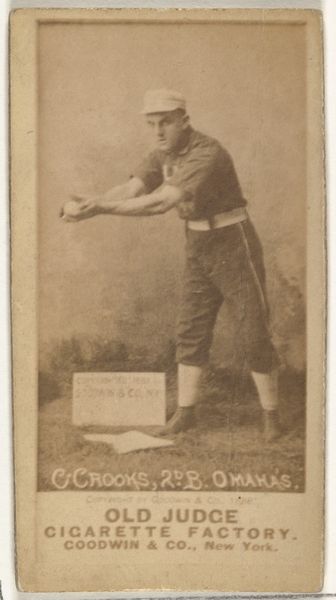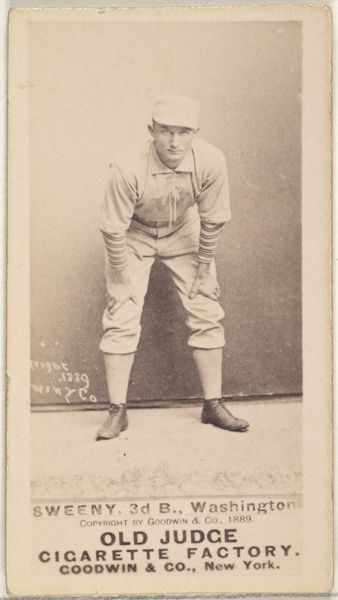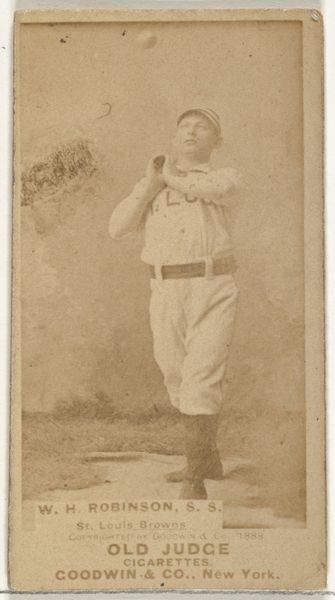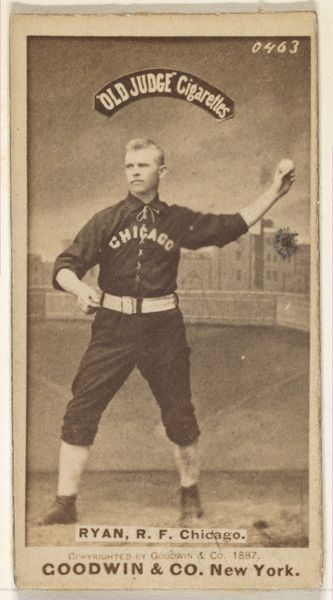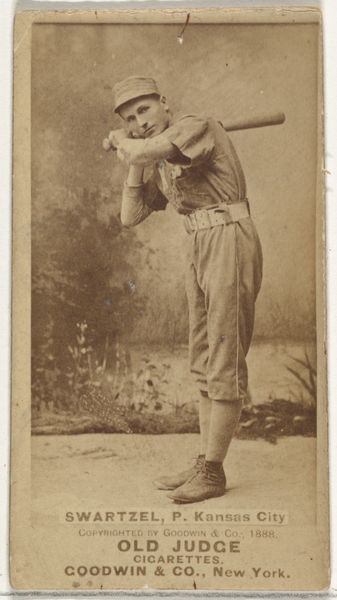
Crooks, 2nd Base, St. Louis Whites, from the Old Judge series (N172) for Old Judge Cigarettes 1888
0:00
0:00
print, photography
#
portrait
# print
#
landscape
#
baseball
#
photography
#
historical photography
#
realism
Dimensions: sheet: 2 11/16 x 1 3/8 in. (6.9 x 3.5 cm)
Copyright: Public Domain
Curator: Before us, we have "Crooks, 2nd Base, St. Louis Whites," a baseball card from the Old Judge series, printed by Goodwin & Company in 1888. Editor: There's something incredibly evocative about this image. The sepia tones and the blurred background almost give it the feeling of a memory. It’s quiet, nostalgic, and seems to romanticize the subject. Curator: The Old Judge series was immensely popular at the time. These cards were included in cigarette packs, effectively turning baseball players into early advertising icons. They offer a fascinating window into the late 19th century and the rise of commercial culture alongside organized sports. Editor: Exactly. This wasn’t just about celebrating athleticism; it was also about intertwining sports with commerce, which raises complex questions about the commodification of players. And who had access to these cards? What does that tell us about societal consumption habits at the time, and access to these burgeoning celebrity figures? Curator: These were mass-produced, certainly, but think about distribution. Cigarettes weren't equally accessible across class lines. It reflects a certain social strata being targeted, connecting ideals of athleticism with leisure and consumerism among the largely white middle and upper classes. Editor: It also underscores the role photography played in shaping public perception. To see these posed shots—'real' individuals in action—versus written descriptions. In its moment, what power dynamics existed and how are they subverted by the realities we experience now? We are afforded a different relationship with historical figures than people did in the moment of that history. Curator: Absolutely. And, seeing it here, within the halls of the Metropolitan Museum of Art elevates it to an object of art historical consideration; worthy of intense viewing now, its inclusion changes it yet again. It's quite an evolution for what was once a small piece of tobacco advertising. Editor: It is also quite something to now see this image digitized and disseminated worldwide on a variety of screens in wildly new contexts. One player and his floating ball become cultural and technological history. Curator: A lot of the initial context changes once it's preserved within institutional and commercial archives and presented and represented decades after its moment of production. A lot to consider, thank you! Editor: Agreed. What seemed initially to me to be such a quaint baseball card actually has a very long reach. Thanks.
Comments
No comments
Be the first to comment and join the conversation on the ultimate creative platform.


